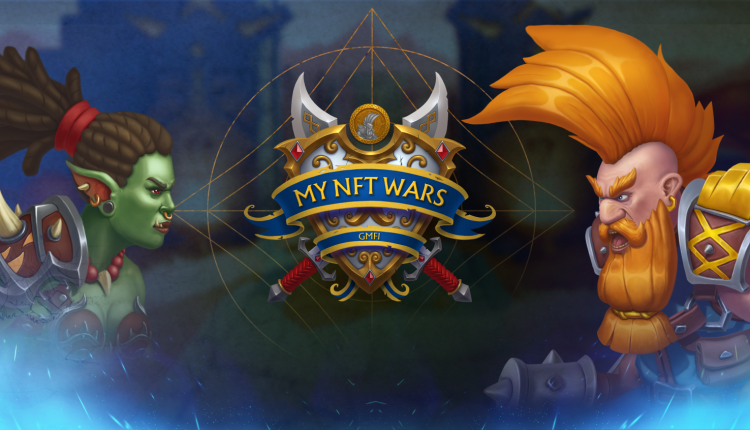Trends in web3 gaming

At NFT.NYC 2023 , iLogos’ Alexander Goldybin, founder and chairman of the board, and Svitlanka Sergiichuk, CBDO and member of the board, gathered some fresh insights and trends about the state of web3 games.

The world of web3 games is experiencing a full-on reset, leaving behind the hype-driven mentality that characterized its early days.
So, what’s driving this change? It’s simple: the web3 games market has matured. As more players and investors enter the space, the industry has shifted its focus to building sustainable, long-term businesses. Beliefs in the recreation of previously successful web3 game cases like Axie Infinity are now in the past.
Alexander Goldybinsays: “Play-to-earn as a business model is dead and has proven to be an unsustainable ponzi scheme. In addition, a lot of talent from traditional gaming is entering the Web3 games market, focusing on what matters most — fun”.
What else should be taken into account?
The importance of community and engagement
It’s becoming clear that a strong and passionate community is key to the success of any web3 game. Game developers and community managers must work together to create games that are engaging and fun to play, and that offer a sense of ownership and agency to the player.
This means that the audience must be involved in the game’s development, from the early stages of concept design to the final product launch.
One example of a successful community-driven game is Rumble Kong League. The iLogos game developers have created a passionate player base through engaging gameplay, unique NFTs, and a sense of ownership and agency over the game’s ecosystem. This has resulted in a thriving community.
Experimentation with game mechanics and narrative
With the web3 games market maturing, there is more room for innovation and creativity. Game developers can explore new mechanics and storylines that offer a fresh take on the gaming experience. This means that players can expect to see more diverse and unique games in the future.
One example of a game that has successfully experimented with game mechanics is Tiny Colony. The project is a pixelated metaverse where players are able to build ant colonies, establish massive alliances with other players, and earn their NFTs. This game mechanic has resulted in a thriving community of players who are constantly creating and innovating within the game’s ecosystem.
Collaboration and cooperation are also becoming key to success. By working together, web3 game companies can share resources and expertise, resulting in more compelling and engaging games for players. This means that players can expect to see more partnerships and collaborations between web3 game companies in the future.
One example of a successful partnership is the collaboration between iLogos and Immutable. The two companies are working on My NFT Wars, a blockchain-based game blending elements of strategy and RPG gameplay with a thriving digital economy.
Together they’ll create a one-stop-shop for the game developers to make the web3 titles a reality in 360: not only the technology, but the integration, liveops and full-cycle game development.
No longer solely about web3
The world of web3 games has been rapidly evolving, with many companies looking to integrate blockchain technology into their games. But, as the market continues to mature, it’s becoming clear that the success of a web3 game is no longer solely dependent on its use of blockchain, NFTs or DeFi.
In fact, what really matters is fun and involving gameplay that a game offers. This shift towards a more traditional game audience has led to a renewed emphasis on creating games that are engaging and fun to play.
Notably, the community of web3 games was primarily made up of money-driven investors and speculators. However, as the market has matured, we’ve seen a shift towards a more traditional game audience.
This audience is interested in the game’s philosophy and the experience it provides, not just the potential financial gains that can be made. As a result, game developers and community managers are now focusing on building a community of gamers who are passionate about the product and its gameplay, rather than just its web3 parts.
Ingredients – fun and engagement
So, what are the factors that make for a fun and involving gameplay for web3 games?
- Firstly, a game needs to have a clear and compelling narrative that draws players in.This can be achieved through well-crafted characters, storylines, and world-building.
- Secondly, the game needs to offer a range of engaging mechanics that keep players coming back for more.This can include things like challenging puzzles, strategic combat systems, or social features that allow players to connect and compete with each other.
- Finally, the game needs to provide a sense of ownership and agency to the player. This can be achieved through the use of NFTs, which allow players to truly own their in-game assets and trade them on a decentralized marketplace.
While web3 technology is still an important part of the gaming landscape, it’s clear that the success of a game is no longer solely dependent on its use of blockchain. Instead, what really matters is the fun and engaging gameplay that the game offers.
As game developers and community managers, it’s our job to create games that offer compelling narratives, engaging mechanics, and a sense of ownership to the player. By doing so, we can build a passionate community of gamers who are invested in the game’s success, and who will continue to play and support the game for years to come.
You can find out more about iLogos’ development smarts via its website.
